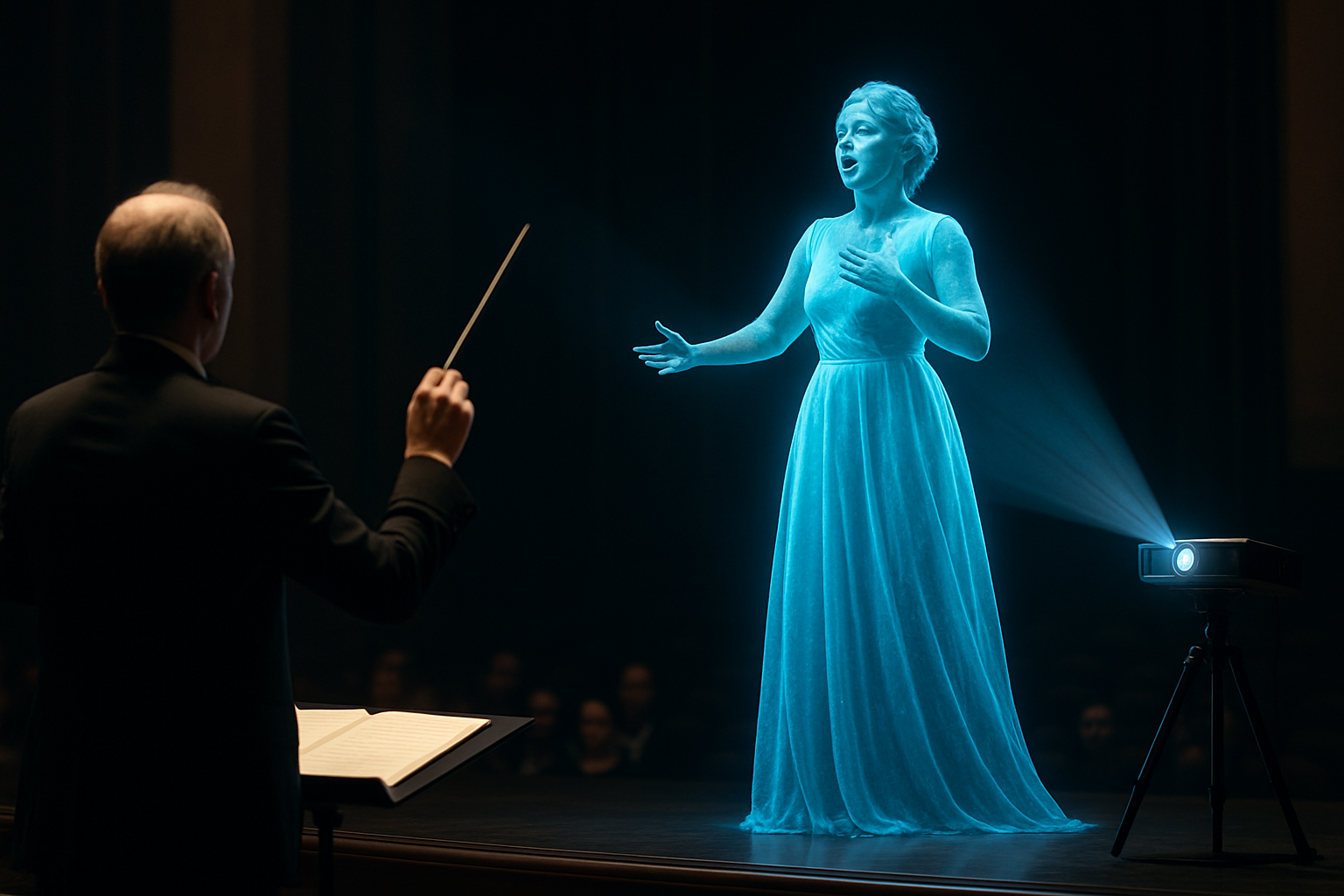Holographic Opera: A New Frontier in Performing Arts
The intersection of cutting-edge technology and classical performance art has given birth to a revolutionary form of entertainment: holographic opera. This groundbreaking fusion melds centuries-old musical traditions with state-of-the-art visual effects, creating an immersive experience that captivates audiences and pushes the boundaries of artistic expression. As holographic opera gains traction in prestigious venues worldwide, it's reshaping perceptions of what's possible in live performances and opening up new avenues for creativity in the operatic realm.

Technological Breakthroughs
Recent advancements in projection technology and computer-generated imagery have revolutionized holographic opera. High-powered lasers, advanced motion capture systems, and sophisticated software now allow for the creation of lifelike, three-dimensional holograms that can interact seamlessly with live performers. These technological leaps have transformed holographic opera from a novelty act into a legitimate art form, capable of rendering complex set designs and fantastical elements with stunning realism.
Artistic Possibilities Unleashed
Holographic opera opens up a world of creative possibilities for directors and designers. Traditional limitations of physical sets and costumes are obliterated, allowing for instantaneous scene changes and impossible visual effects. Imagine a production of Wagner’s Ring Cycle where Valhalla materializes in midair, or a rendering of Stravinsky’s The Firebird with a holographic phoenix soaring above the audience. These once-fantastical concepts are now within reach, limited only by the imagination of the creative team.
Challenges and Controversies
Despite its potential, holographic opera faces several challenges. Purists argue that the technology detracts from the raw power of the human voice and the intimacy of live performance. There are also concerns about the potential for holographic technology to replace live performers entirely, raising questions about the future of operatic careers. Additionally, the high cost of implementing holographic systems presents a significant barrier for many opera companies, potentially widening the gap between well-funded institutions and smaller, regional organizations.
The Future of Holographic Opera
As technology continues to evolve, so too will the possibilities for holographic opera. Industry insiders predict advancements in haptic feedback and augmented reality that could allow audience members to interact with holographic elements, blurring the line between spectator and participant. There’s also growing interest in using holographic technology to bring historical performances to life, potentially allowing modern audiences to experience legendary singers of the past in virtual duets with contemporary artists.
Cultural Impact and Global Reception
Holographic opera has been met with a mix of excitement and skepticism across the global arts community. In tech-savvy regions like Japan and South Korea, holographic performances have been embraced as the natural evolution of traditional art forms. European opera houses, steeped in centuries of tradition, have been more cautious in their adoption, often incorporating holographic elements gradually into otherwise conventional productions. In the United States, holographic opera has found a receptive audience in metropolitan areas, where it’s viewed as a fresh way to attract younger, tech-savvy patrons to an art form often perceived as outdated.
Educational Applications
Beyond entertainment, holographic opera is finding applications in music education. Conservatories and universities are exploring the use of holographic technology to provide students with immersive learning experiences. Aspiring singers can now practice performing alongside holographic orchestras or study the techniques of great performers through lifelike projections. This technology also offers opportunities for remote collaboration, allowing students in different parts of the world to perform together in virtual spaces.
Economic Implications
The emergence of holographic opera has significant economic implications for the performing arts industry. While the initial investment in holographic technology is substantial, it offers potential long-term cost savings in set design and production. Additionally, the novelty factor of holographic performances has proven to be a powerful draw for audiences, potentially increasing ticket sales and attracting new sponsors intrigued by the cutting-edge technology. However, there are concerns about the potential for job displacement, particularly among set designers and stagehands whose roles may be diminished in holographic productions.
Ethical Considerations
As holographic opera evolves, it raises a host of ethical questions. The ability to recreate deceased performers or manipulate the appearance of living artists raises issues of consent and image rights. There are also debates about the authenticity of holographic performances and whether they should be considered on par with traditional live opera. These ethical considerations are shaping industry guidelines and prompting discussions about the nature of art in the digital age.
Conclusion
Holographic opera stands at the forefront of a technological revolution in the performing arts. By marrying centuries-old musical traditions with cutting-edge visual technology, it offers a glimpse into the future of entertainment. While challenges and controversies remain, the potential for artistic innovation and audience engagement is undeniable. As technology continues to advance and artists push the boundaries of what’s possible, holographic opera may well become the new standard in operatic performance, ushering in an era where the limits of imagination are the only constraints on artistic expression.




